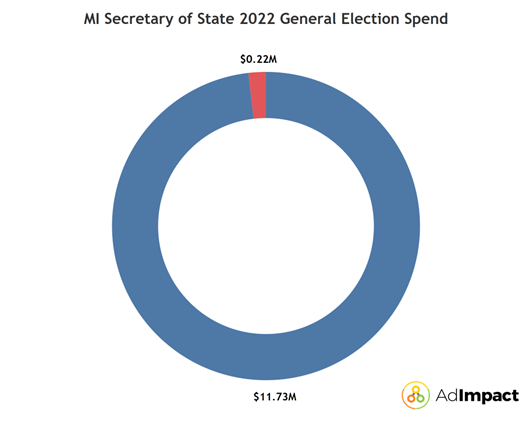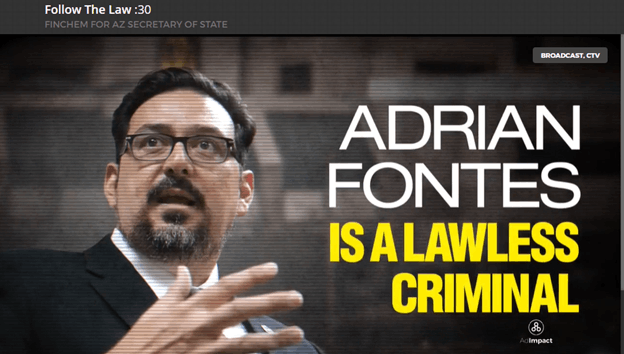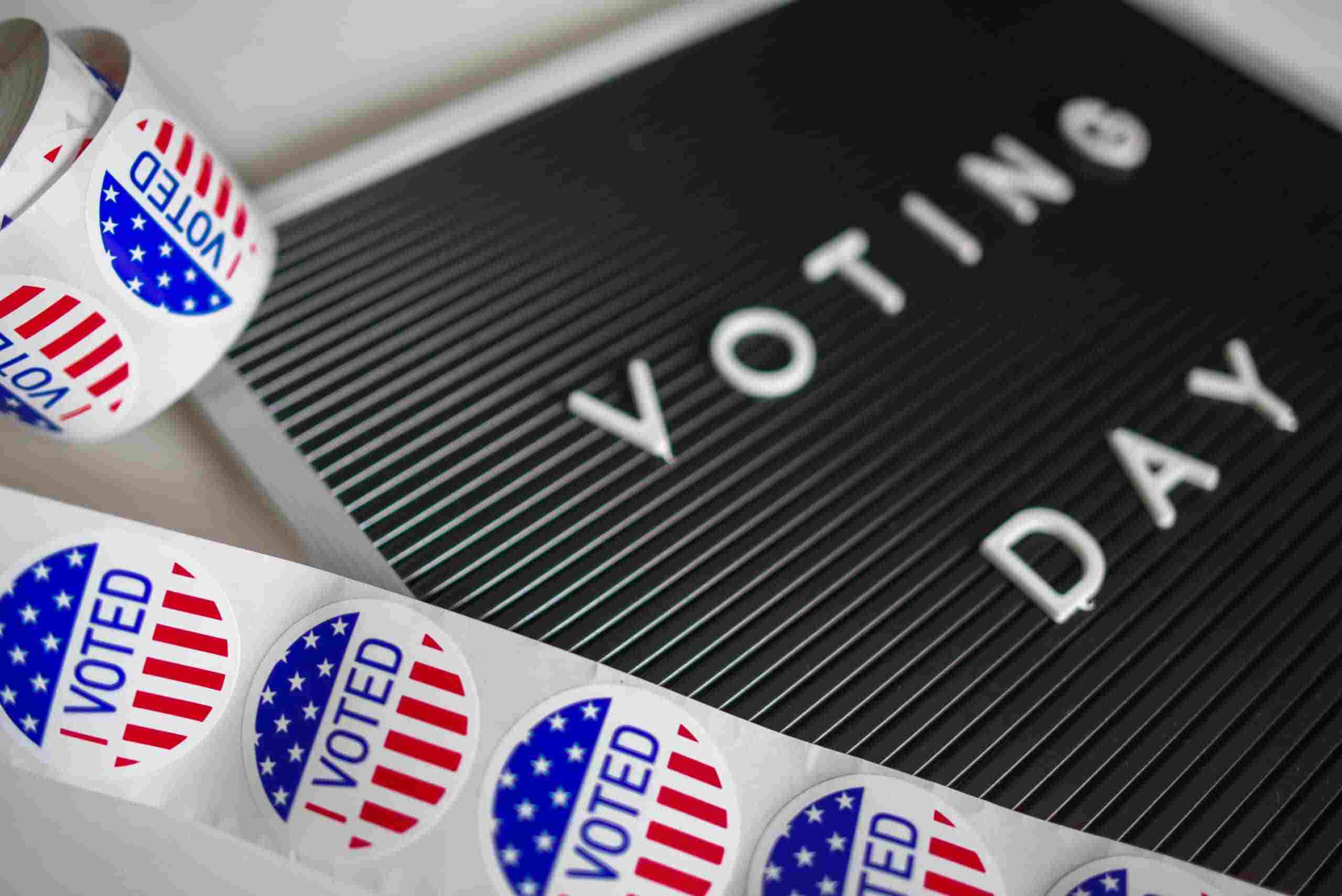Written by Josh Fried
Secretary of State elections have generally been sleepy affairs, as off-year attention typically focuses on Senate and Gubernatorial elections. Given the closeness of the 2020 Presidential election and claims of voter fraud, this cycle’s Secretary of State elections demanded the attention of both parties. Allies of former President Donald Trump announced that this year they would get involved in Republican primaries for Secretary of State and provide the Republican endorsees financial support through the general if they won their respective Primaries. These Republicans joined The America First Secretary of State Coalition, a group of Republican Secretary of State candidates whose goals included implementing Voter ID Laws and eliminating mail-in ballots. Battleground Secretary of State elections became a litmus test on the Republican side regarding control of election administration and relitigating the results of the 2020 Presidential election. As a result, narratives emerged. Republican candidates campaigned on “election integrity” and relitigating the 2020 election while Democratic candidates campaigned primarily on “protecting democracy” and “combating extremism”. Due to an increased focus on Secretary of State spending, we saw record numbers in 2022. This cycle saw $71M in Secretary of State general election spending, nearly ten times that of 2018’s $7.7M. Michigan and Arizona’s Secretary of State elections were the two most expensive in the nation. They drew national interest due to high spending levels and contrasting advertising strategies.
While Michigan Democrats had control of the Secretary of State office before the 2022 General election, many Republicans believed that putting up a candidate who questioned the results of the 2020 election could make the race competitive. Trump-endorsed candidate Kristina Karamo won the Republican Party Convention to become the GOP nominee. A community college professor, Karamo was known for seeking a court order to reject tens of thousands of absentee ballots from Detroit voters. The attempt was subsequently denied by a judge. She faced off against incumbent Democrat Jocelyn Benson. Karamo and Benson had divergent messaging strategies on broadcast.
Benson had 3,967 airings on broadcast while Karamo only had 101, giving the Democrat a 40:1 advantage. Forty-six percent of Benson’s broadcast airings focused on increasing voter accessibility. This ad conveyed a positive tone geared toward increasing access to voting by putting drop boxes across the state where voters could drop off their mail-In ballots. Benson also emphasized that elections should be “secure, free, and fair”, dissuading fears of election misinformation. Benson’s messaging also focused on abortion, as it was the second most discussed issue by her campaign with 1,320 airings on broadcast. Another Benson ad featured testimonials from various voters on how Benson’s policies positively affected their lives. One voter characterized Karamo as “partisan and extreme” while another voter claimed Karamo wanted to “criminalize abortion.” Another voter in the ad contrasted Benson with Karamo claiming Benson put “our country above partisanship”. While Benson’s ads celebrated her accomplishments, Karamo’s messaging criticized the incumbent’s policies. Karamo’s most aired ad had 57 Broadcast airings. It featured a testimonial from a voter who claimed that the US mainstream media was “brainwashing” Americans and spreading election misinformation, reminding her of her childhood in Mao Zedong’s Communist China. Another Karamo ad addressed the issue of election integrity, criticizing Benson’s refusal “to remove 26,000 dead people from [Michigan’s] voter rolls.”
Of Secretary of State general election spending, Michigan saw the second most, at $11.9M in ad spending. Democrat advertisers heavily outspent Republican advertisers in Michigan’s Secretary of State general: $11.7M to $217K. The total spending discrepancy was highlighted by candidate spending, as Benson outspent Karamo $4.5M to $201K. Benson ended up defeating Karamo 56%-42%, the biggest margin of victory of any 2022 Michigan statewide democrat.

Arizona saw the most Secretary of State general election spending in the country this cycle. The Grand Canyon State also saw a Trump-endorsed Republican who questioned the 2020 Presidential election results win the Republican Primary. Arizona State Senator Mark Finchem won the Republican primary and Maricopa County Recorder Adrian Fontes won the Democratic primary. As Finchem’s history of election denialism took center stage during the general, Fontes received bipartisan endorsements from Democrats and various Arizona Republicans, including Republican State Rep. Joel John, who represents a competitive suburban Phoenix State House district. Similar to Michigan, the Democrat nominee greatly outspent the Republican nominee. On broadcast, Fontes had 1,613 airings while Finchem only had 163 airings. Of Fontes’s airings, 898 focused on voter accessibility.

In his most aired ad, Fontes portrayed himself as an Independent candidate in the mold of John McCain while portraying Finchem as an extremist who wanted to overturn future elections. He portrayed himself as the candidate who would protect voting rights while claiming Finchem would make voting more difficult. Conservative Republican and former US Attorney for Arizona Paul Charltod endorsed Fontes in another ad, in which he stressed that while he disagreed with Fontes on several issues, he is concerned about the state of American democracy. While Fontes focused on courting moderate Republican and independent voters in his messaging, Finchem aired negative ads about Fontes’s character. Finchem aired an ad claiming that Fontes opened voting centers in favored areas in Maricopa County in 2020 with Fontes juxtaposed next to Hugo Chavez and Che Guevara.

A second ad portrayed Fontes as a “lawless criminal” while Finchem highlighted his experience as a sheriff. Overall, Fontes portrayed himself as an independent who would not cave to extremism while Finchem’s messaging tried to portray Fontes as a partisan Democrat who did not care about “election integrity”.

Fontes outspent Finchem $1.2M to $528K in the general. Not only did Fontes have more airings than Finchem daily, but he also started airing earlier in the general election. Fontes started airing on broadcast the week of September 25, whereas Finchem didn’t start airing his ads until the week of October 9. Fontes ads had already had 333 airings on broadcast in the Phoenix and Tucson markets before Finchem went on air. Ultimately, Fontes defeated Finchem by 5 points and won battleground Maricopa County 54%-46%, signaling a defeat to Finchem.

Michigan and Arizona offer an analysis of how Republican and Democratic candidates approached battleground Secretary of State elections. On the Republican side, the Secretary of State elections became a litmus test for relitigating the 2020 election. We saw similar themes play out in Minnesota and Nevada. Republicans Kim Crockett (MN) and Jim Marchant (NV) were also members of the America First Secretary of State coalition and would have aligned with Kristina Karamo and Mark Finchem to enact similar policies. In both the Minnesota and Nevada Secretary of State General elections, Democrat advertisers greatly outspent Republican advertisers. Crockett was soundly defeated by Incumbent Democrat Steve Simon, while Democrats flipped the open NV Secretary of State seat vacated by Republican Barbara Cegavske due to term limits. All of the Trump-endorsed Secretary of State candidates in battleground states lost.
If you're interested in how Trump endorsed candidates such as Finchem spent in their respective primaries, check out our blog detailing Trump's endorsed candidates primary spending.









